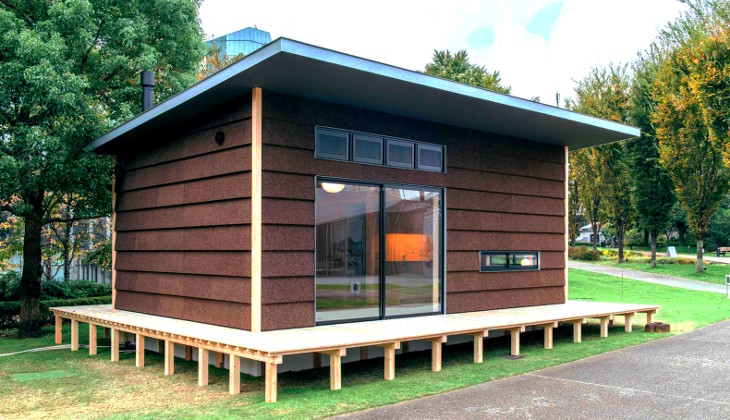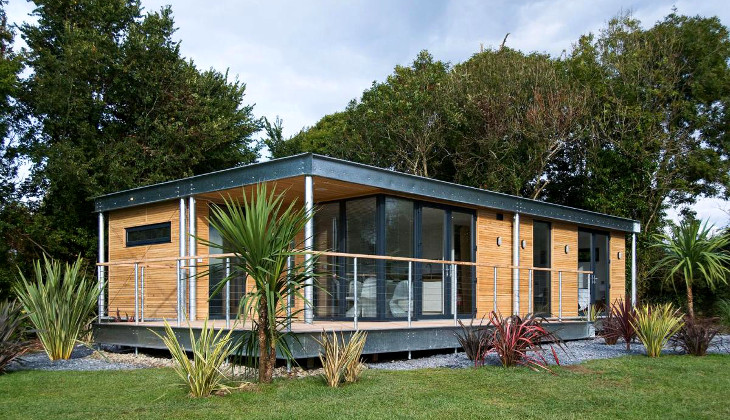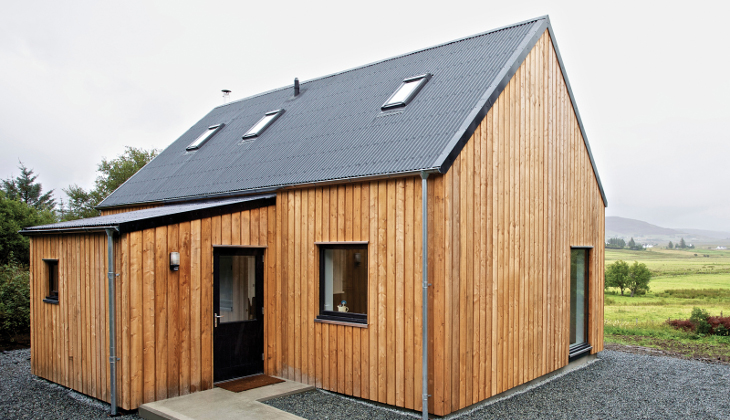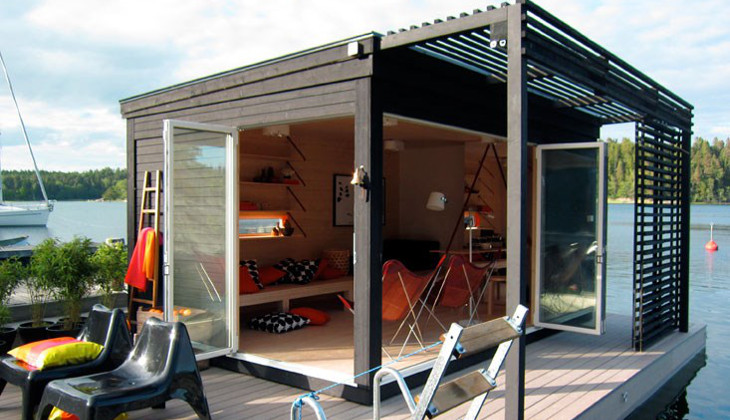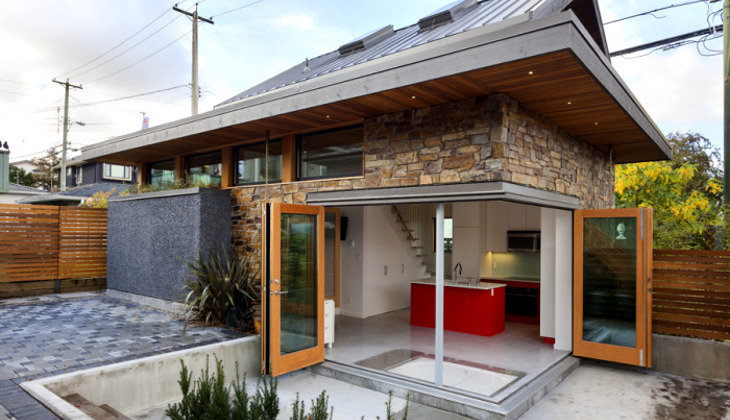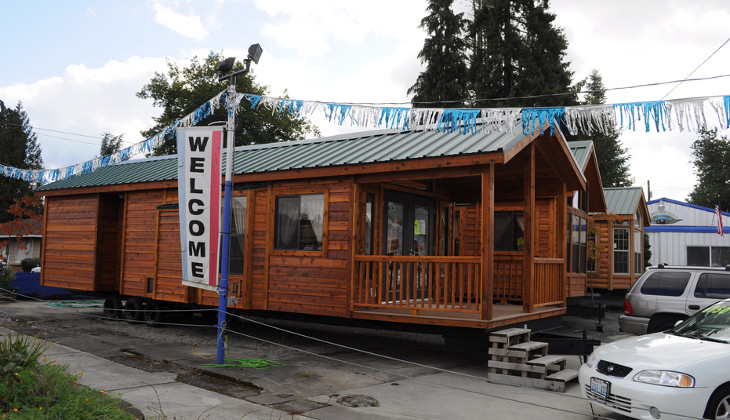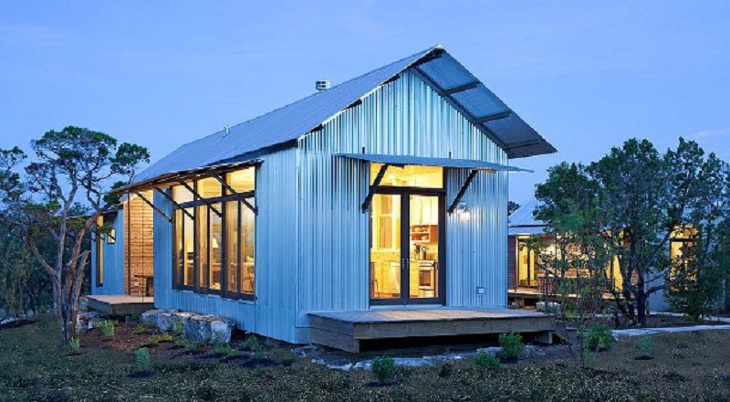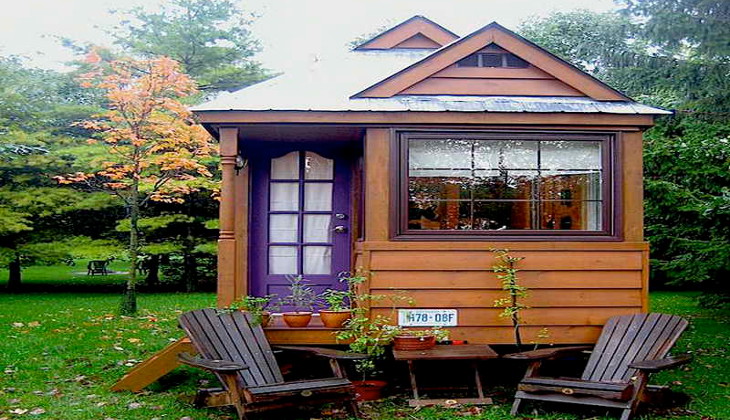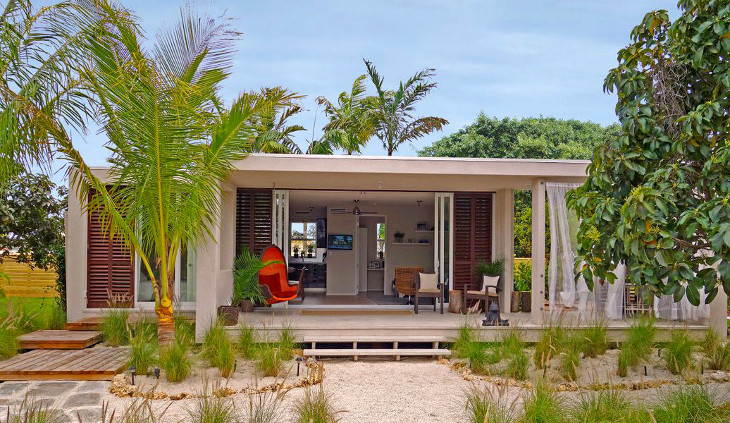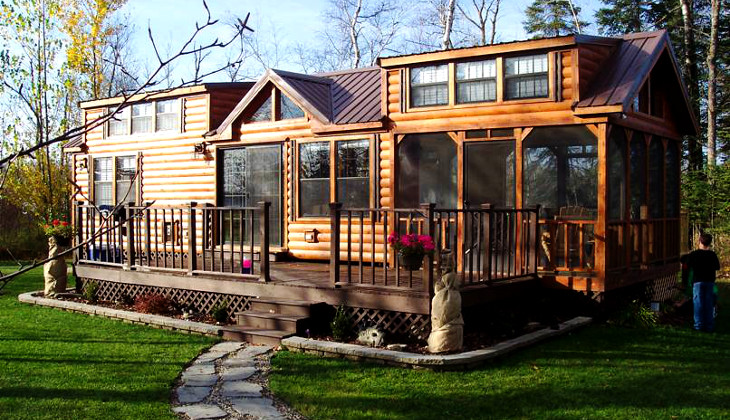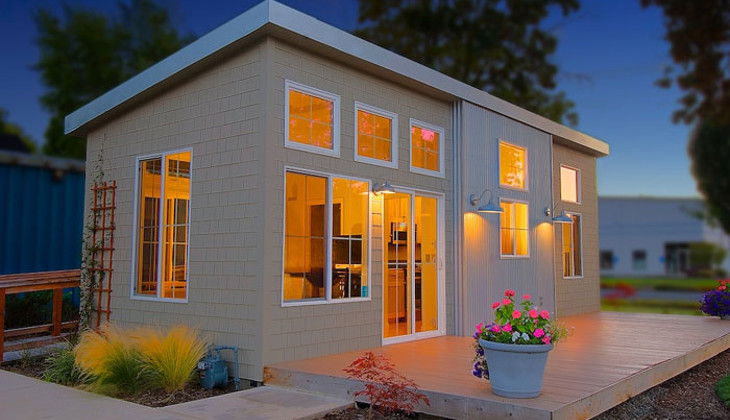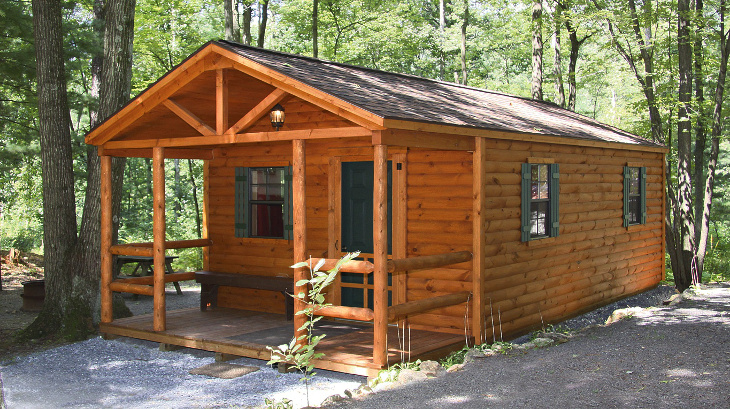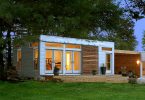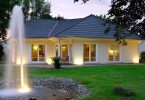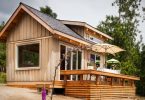Proponents of tiny modular homes claim that these homes are safer, greener and more cost-effective. For many years now, most residents of Tokyo and other big cities in the world have been coming up with novel ways to save on space when it comes to housing.
They opt for skyscrapers stuffed with miniature living quarters, small modular homes and hotels with rooms that contain little more than a pull-out of shelf bed. Now, most of the world’s big cities are doing something similar.
Due to the skyrocketing costs of real estate and the growing trend towards minimalistic lifestyle, most people are considering alternatives to the traditional residential living spaces. These traditional living spaces include the single-family homes, apartments,and condos. The most common alternative to these traditional living spaces is the tiny modular house.
What’s a tiny house?
A tiny house is a compact version of a house. The house is built to fit on trailers for transportation or on-the-road living. However, most tiny homeowners opt to set their houses’ down roots on a piece of land in their neighborhoods and treat their small houses as traditional homes.
Though you can decide to get your tiny house constructed on an existing floor plan, you can still customize your floor plan depending on your space and design requirements.
Modular structures make use of pre-manufactures units including homes, apartments or offices that are built in a factory then transported to the construction site where the house is assembled using a crane. These homes are a great approach to offering homeowners a sustainable life.
Constructing a house in factory can yield more standardization, making it potentially safer and more energy-efficient as well as more environmentally-friendly.
Tiny houses vary as the people who love them. They can be ice fishing shacks or gingerbread cottages and can float on water or sit on wheels. Some tiny homes sprout in inner-city lots while others settle like dust motes in the wilderness. What tiny houses have in common is their size (not more that 400 sq. feet) and adoring followers.
The current fad for miniaturized living can be traced back to Sarah Susanka’s book The Not So Big House, which became the leading book in Amazon marketplace and spawned a Not So Big franchise. Before Sarah’s book, compact living spaces were a theme pursued separately by the artist Allan Wexler in 1970s and Andrea Zittel in 1990s.
Today’s tiny houses have been enhanced to be more of a home rather than a simple cheap structure. They have all the features of a home and you can always customize it the way you want during construction.
Are prefab tiny homes right for you?
Transitioning to life in a tiny manufactured home is a trend but not for everyone. In fact, downsizing to an apartment is challenging for most people. To move your life from a house or an apartment into a tiny prefab house requires an ability to say goodbye to your huge and excessive material belongings.
Additionally, you should be prepared to let go of all hyper-organized and claustrophobic tendencies. This is because the tiny houses need overlap between work spaces. For instance, your kitchen counter space can also be an office desk!
Don’t be surprised that most tiny homeowners greet these experiences that some of us perceive as challenges with pleasure. The minimalistic lifestyle is an effective approach to alleviating stress or burden of taking care of unnecessary keepsakes.
In fact, it can be perceived as a way of simplifying one’s daily life. For example, house cleaning ceases to be a tedious task because you no longer need to dust or vacuum many rooms with rugs and carpets. Also, you don’t need to spend thousands of dollars on interior décor. Your home will be chuck-full of necessary stuff, making décor a less necessary input.
Many small manufactured homeowners take this approach to either minimize the stress associated with their lifestyles, to test themselves with the minimalistic lifestyle or to reduce their monthly budgets.
To give you an idea of how much a tiny prefab house can save on your bills, think about heating a 500-square foo- home against a tiny house. Clearly, living in a tiny house offers financial benefits when it comes to minimizing utility bills.
Does this sound perfect to you? A tiny house is perfect for you if you:
- Want to live more frugally. Most people opt for modular small homes because of their potential to cut costs. Right from lower purchase price to saving on utility bills, these homes offer simple and at the same time satisfying life.
- Are environmentally conscious. Tiny homes are known for their minimized carbon footprint. In fact, most homeowners go for these houses because they use environmentally-friendly sources of energy including solar panels.
- Have a small family and are not claustrophobic. The average square footage of a tiny home is 180sq feet. Well, think about what that footage means for how close you will be to your pets and children. If you are the type that requires privacy all the time, you may need to think about how you will handle these extreme close quarters if you have to live in a tiny prefab house.
Benefits of pre built tiny homes
Some people are obsessed with tiny prefab homes. They watch all the shows dedicated to unique tiny home living including Tiny House Building, Tiny House Hunters, Tiny House Nation and more.
Let’s take a look at some of the reasons why some people are so obsessed with living in a tiny home.
You can take your home travelling
The ability to hitch the home to a truck and drive it to a new location is among the big benefits of owning a tiny home. Whether you are going on a vacation or trying to relocate, you don’t have to pack up suitcases. Having a small manufactured home makes it surprisingly easy for you to move to new places.
Note that different homes are constructed differently. Some are equipped with solar panels and rainwater collection. Such homes are designed to live entirely off the grid. You can park it anywhere you wish.
Other small manufactured homes are constructed like traditional homes and require water and power hook-ups. These homes are better suited to particular pieces of land dedicated to modular home settlement.
Regardless of how your tiny home is designed, its mobility potential is an incredible benefit.
You don’t have to empty your bank accounts purchasing it
If you have the money, expertise and time to design and construct your own tiny mobile house, you will spend money on only the materials. If you don’t have the necessary expertise, there are many modular home designers out there who can create the home according to your requirements.
However, this will be costly because you will be paying for materials, manpower, and any other necessary expense.
The cost of tiny modular house is simply a fraction of the cost of traditional homes. And of course, you will have everything designed for you; bedrooms, kitchen, living room, bathroom, and more. The cost of tiny modular houses ranges from $19,000 or less to $50,000 or more, depending on the type of finishes you want and the size of your house.
The low cost implies that you can pay the entire price in cash, especially if you saved adequately. With that, you will have eliminated the challenges associated with mortgage payments. If you can’t pay the entire price at once, the loan payments will be way less than mortgage payment for custom, site-built homes.
You don’t have to worry about future movements
One of the things that holds people back from purchasing site-built homes is the homes’ permanence. If you invest your entire life savings into an immovable structure and the land surrounding it, what will happen when you get a job in a different country, state, or city and you want to relocate?
Unless you purchase your own piece of land to park your manufactured home, you aren’t tied to any location. Your only permanent tie is your home. Therefore, you can always relocate to wherever you want with your home. Though you will have to get a piece of land to place your home, you will still enjoy greater mobility and flexibility.
Also, you will not bother to start selling your previous home just because you want to relocate or build a new home in your new location. Everything is simple. You want to relocate? Lock everything inside your house, hitch it to a track, and drive it to your new location!
You can be extremely environmentally-friendly
Since your home is going to be small, it can be made majorly from repurposed, recycled and salvaged materials. Besides making the house look cool and unique, it will also save the same amount from being manufactured.
You can also decide to live off the grid. For instance, you can use wind or solar to generate enough energy for home heating and lighting. You can also use rainwater catch and filtration systems as well as installing a composite toilet. All these are steps that will make your tiny home function anywhere in the world in a more environmentally-friendly way.
Energy efficiency
Whether your tiny home needs to be hooked to a power line of uses solar energy, the energy requirements of such home are less than the energy requirements for huge custom site-built homes. Note that small spaces need less heat energy for home heating and cooling and small and efficient appliances consumes less energy.
If your home must be hooked to a power line, you will have to pay energy bills. But these bills will be lower than those of traditional homes becomes your tiny homes has less energy requirements.
Apart from saving on energy bills, you are also saving on your mortgage and if you have to go on vacation, you may not need to worry about expensive hotels. Living in a small mobile home is synonymous to saving.
Living in a tiny prefab house can de-clutter your life
After living in a traditional house for a long time, things just pile up everywhere. One way of de-cluttering such a home is by opting for a small modular home. Since you can’t pack everything in your 2000 or more square foot home into a 220 square foot home, by necessity, you will sell or donate a lot of things.
This will present a perfect chance for you to look at what among your possessions is more important to you and what is just filling the space around you or the stuff you bought just because it seemed cool. Once you have sorted out your items, you will sell or donate what means less to you and keep what’s essential.
This will not only make it easier for you to move from one location to another but also make your home de-cluttered and more organized.
Disadvantages of living in modular tiny homes
Don’t be deceived, parts of the entire process of living in a tiny house are challenging. Here are some of these challenges.
Everything is work in progress
If you love relocating often just because you have tiny modular house, you should prepare yourself to replace things that break while moving your home to the new location. Even if you have hitched your home onto a truck while moving, there are bumps on the road and your home’s survival depends on how robust its structure is. If you get involved in a road accident, your home might become wreckage.
While living in a tiny house, every action has consequences that you must be aware of. Spilling water on your wooden floor and ignoring it would mean something more than just moisture. It will eventually lead to mold, which will have a more dramatic effect in smaller living spaces. While living in a tiny house, you must be cautious of everything you do.
If you have a big family, space is an issue
Tiny houses are entirely impractical for large families. They are too small to be viable option for everyone’s needs in a big family. From the get-go, you will instantly outcast yourself because of social influences and norms. Think of having three children, your nephew, two cousins and your mother-in-law in the house at once. It’s simply impractical to stay in such a space.
Security issues
The biggest concern in living in a tiny modular house is safety. Such homes are susceptible to strong winds, harsh weather and heavy falling object falls that could mean the end of your roof. In case of fire outbreaks, the house can be consumed within a few minutes given the fact that most tiny houses are made of wood.
If your home is hitched on a trailer, it can be stolen. This means that you will need to be at home where you can watch it or place it in a modular home community. Lastly, you cannot insure your tiny house, and this means that you will have a liability equivalent to your home’s value.
Clutter
Since your house has small space, it will be always cluttered unless you usually return whatever you use where it was before you used it. If you have children who love running up and down and playing with whatever they meet, then clutter will take on a life of its own.
It will be difficult to host parties in your home
Having a tiny house means having little space. If you are celebrating your kid’s birthday, it will be difficult for you to host your guests inside your house. Therefore, you may be forced to hire venues or invite just a few people.
Other disadvantages of tiny homes include:
- It’s difficult to find certified tiny house builders. Keep in mind that things that work for a traditional home might be impractical for a tiny house.
- Land availability isn’t automatic. Though your tiny home can fit almost anywhere, finding a piece of small land enough to meet your requirements isn’t always easy.
Is a tiny home for you?
Despite the challenges faced by tiny homeowners, tiny homes aren’t just small version of ‘a roof over your head.’ It’s an ideal example of how we can live sustainably in the future. Though it can’t be a solution for everyone, it can definitely serve as an inspiration and an example for anyone wishing to live a more sustainable life.
What did we miss? Would you want to live in a tiny home? Let us know what you think!

